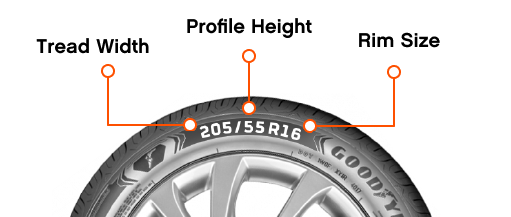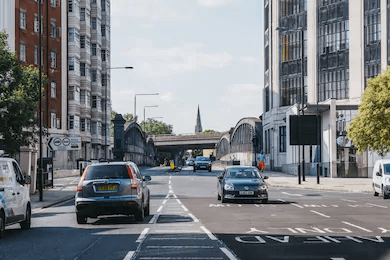Complete 3 steps to buy & book online


If there’s one thing all drivers can agree on, it’s that there’s never a good time for a flat tyre. But don’t worry, changing a flat tyre yourself isn’t difficult if you know the steps to follow.
What equipment do I need to change a tyre?
To change the tyre on most cars you’ll need:
Your car owner’s manual
Your spare tyre
A wheel brace/wrench
A jack
There are some other items you may wish to store in your vehicle to ensure you’re prepared for a flat, no matter the weather:
A rain poncho
Gloves
A flashlight
The tools required to change a flat tyre will usually be with the spare in your boot. Refer to your vehicle owner’s manual if you need help locating them. The owner’s manual will also provide any extra information you should be aware of - specific to your vehicle - when you’re changing a flat tyre.
And remember, when you’re checking the tyre pressure of your other tyres, inflate your spare too. This will ensure it’s ready if you ever get a puncture or flat tyre.
Steps for changing a tyre
1. Pull over in a safe location
If you suspect you have a flat tyre, or know you have a flat tyre, drive slowly and pull over in a safe place. When changing a tyre, the ground must be firm enough to support the jack, flat to ensure the jack doesn't slip, and away from passing traffic for safety reasons.
You should also turn your hazard lights on. Do this as early as it is safe to do so to let other drivers know you have an issue with your vehicle. When you’ve pulled over in a safe spot, you should also ask all passengers to step out of the vehicle.
2. Secure the vehicle
It’s critical that the vehicle is secure before attempting to change a tyre. Apply the handbrake, ensure the vehicle is in park (first gear if manual) and remove the keys from the ignition.
3. Remove the hubcap or wheel cover
Take out the spare wheel, jack, and tools. Remove the hubcap or wheel nut covers, depending on which is fitted to your vehicle.
You can remove the hubcap using the flat end of your wheel brace. Note that on some vehicles the hubcap is held on by the wheel nuts. Should your hubcaps require a different tool, check your owner’s manual.
4. Loosen the wheel nuts
Using the wheel brace, turn the wheel nuts counterclockwise until you loosen them approximately one turn. If you position the wheel brace so it is parallel to the ground you can use your body weight to help loosen the nuts.
5. Raise the vehicle with the jack
Refer to your vehicle owner’s manual to identify the correct position for the jack. Use the jack to slowly raise the vehicle until the tyre is just off the ground.
Important: For safety reasons, because the jack may slip or give way, neither you nor anyone else should get under the car or place any body part under the car while it’s supported by the jack.
6. Unscrew the wheel nuts
When the wheel is off the ground, you may remove each wheel nut. You should be able to do this mostly by hand, as you’ve already loosened them in step 4.
7. Remove the wheel
Remove the wheel of the car by gripping the tyre by the treads. Set the tyre on its side so it doesn’t roll away.
Tip: You can place the flat tyre under the car as an extra safety precaution. That way, if the jack gives way or slips there is still something to prevent your vehicle from making contact with the ground and causing damage.
8. Lift the spare wheel on to the hub
Now, line up the wheel studs with the holes in the spare wheel and lift the spare wheel on to the hub, ensuring it’s fitted properly. Put the wheel nuts back on and tighten them clockwise all the way by hand.
9. Lower the vehicle and tighten the wheel nuts
Ensure nothing is under the vehicle and,using the jack, slowly lower the vehicle so the spare tyre is on the ground – but not so the full weight of the vehicle is on the tyre.
This will stop the wheel from turning. You should now use the wheel brace to tighten the wheel nuts. The vehicle owner’s manual will list the correct torque for the wheel nuts.
10. Stow the flat tyre and equipment
You can now lower the vehicle all the way and remove the jack. Stow the flat tyre along with all equipment used before driving away.
Tip: You should drive cautiously. At the earliest opportunity, check that the spare tyre is correctly inflated and use the wheel brace to recheck that the wheel nuts are fastly tightened.
11. Take your flat tyre to a technician
Some spare tyres are not designed to drive at high speeds or for long distances. These tyres will have a sticker on the wheel listing maximum operational speed and/or distance. Your tyre technician will be able to assess the damage to your punctured tyre and determine whether it is repairable or needs to be replaced.
Need Help?
Our team of tyre experts is ready to assist you in finding the perfect tyres for your vehicle. Give us a call today at 13 23 81 to receive personalised guidance and recommendations.
Alternatively, you can visit our website to locate the nearest store and explore our wide range of tyres.




